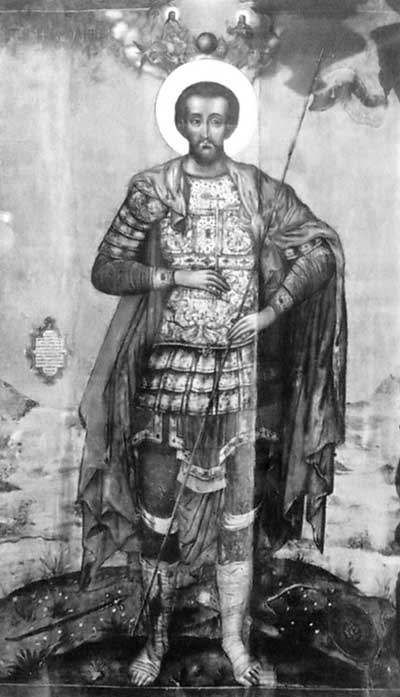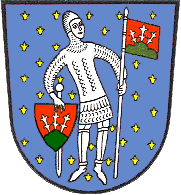|
July 29 (Eastern Orthodox Liturgics)
July 28 - Eastern Orthodox Church calendar - July 30 All fixed commemorations below are celebrated on ''August 11'' by Old Calendar. For July 29th, Orthodox Churches on the Old Calendar commemorate the Saints listed on ''July 16''. Saints * Virgin-martyr Seraphima (''Serapia'') of Antioch (c. 117-138)July 29/August 11 Orthodox Calendar (PRAVOSLAVIE.RU). '' The Year of Our Salvation - Holy Transfiguration Monastery, Brookline, Massachusetts. * ''Martyr Kallinikos of in |
John The Warrior
John the Warrior ( gr, Ἰωάννης ὁ στρατιώτης, russian: Иоанн Воин, ''Ioann Voin'') or John the Soldier in the Catholic Church is a Christian saint and martyr. He was born in the 4th century and lived until his death in the Byzantine Empire. Forced by Julian the Apostate to serve as a warrior against Christianity, he was imprisoned after being caught helping people in need or defending Christians, and awaited there his death penalty. However, John the Warrior was released after the death of the emperor during a war. The Warrior is always depicted as having dark hair and a beard, as well as wearing a weskit, trousers, boots, scale armour and a cape. Three symbols characterizes him; cross, spear and shield. Biography During the reign of Roman emperor Julian the Apostate in the last era of persecution of Christians in the Roman Empire, persecution towards Christians in the Roman Empire, John the Warrior served as a soldier in the army, and was forced by Jul ... [...More Info...] [...Related Items...] OR: [Wikipedia] [Google] [Baidu] |
Lupus Of Troyes
Saint Lupus (french: Loup, Leu, ( cy, Bleiddian) ( 383 – c. 478 AD) was an early bishop of Troyes. Around 426, the bishops in Britain requested assistance from the bishops of Gaul in dealing with Pelagianism. Germanus of Auxerre and Lupus were sent. Life Born at Toul, he was the son of a wealthy nobleman, Epirocus of Toul. He has been called the brother of Vincent of Lérins. Having lost his parents when he was an infant, Lupus was brought up by his uncle Alistocus. Lupus was brother-in-law to Hilary of Arles, as he had married one of Hilary's sisters, Pimeniola. Lupus held a number of estates in Maxima Sequanorum, and worked as a lawyer. After six years of marriage, he and his wife parted by mutual agreement. Lupus sold his estate and gave the money to the poor. He entered Lérins Abbey, a community led by Saint Honoratus, where he stayed about a year. In 427 Honoratus was named Bishop of Arles, and Hilary accompanied him to his new see. Lupus retired to Macon where he came ... [...More Info...] [...Related Items...] OR: [Wikipedia] [Google] [Baidu] |
John O'Hanlon (writer)
John Canon O'Hanlon MRIA (30 April 1821 – 15 May 1905) was an Irish Catholic priest, scholar and writer who also published poetry and illustrations, and involved himself in Irish politics. He is best known as a folklorist and a hagiographer, and in particular for his comprehensive ''Lives of the Irish Saints''. Life O'Hanlon was born in Stradbally, Laois. His parents were Edward and Honor Hanlon. He attended the Preston School in Ballyroan and then entered Carlow College to study for the priesthood. Before he completed his studies, however, he emigrated in 1842 with members of his family, initially to Quebec, but ultimately to Missouri in the United States of America (a migration perhaps occasioned by the death of his father). The family settled in Millwood in northeast Missouri. O'Hanlon was admitted to the diocesan college in St. Louis, completed his studies, and was ordained in 1847. He was then assigned a mission in the diocese of St. Louis, where he ministered until 185 ... [...More Info...] [...Related Items...] OR: [Wikipedia] [Google] [Baidu] |
Bishop Of Orleans
A bishop is an ordained clergy member who is entrusted with a position of authority and oversight in a religious institution. In Christianity, bishops are normally responsible for the governance of dioceses. The role or office of bishop is called episcopacy. Organizationally, several Christian denominations utilize ecclesiastical structures that call for the position of bishops, while other denominations have dispensed with this office, seeing it as a symbol of power. Bishops have also exercised political authority. Traditionally, bishops claim apostolic succession, a direct historical lineage dating back to the original Twelve Apostles or Saint Paul. The bishops are by doctrine understood as those who possess the full priesthood given by Jesus Christ, and therefore may ordain other clergy, including other bishops. A person ordained as a deacon, priest (i.e. presbyter), and then bishop is understood to hold the fullness of the ministerial priesthood, given responsibility by ... [...More Info...] [...Related Items...] OR: [Wikipedia] [Google] [Baidu] |
Sabine Baring-Gould
Sabine Baring-Gould ( ; 28 January 1834 – 2 January 1924) of Lew Trenchard in Devon, England, was an Anglican priest, hagiographer, antiquarian, novelist, folk song collector and eclectic scholar. His bibliography consists of more than 1,240 publications, though this list continues to grow. His family home, the manor house of Lew Trenchard, near Okehampton, Devon, has been preserved as he had it rebuilt and is now a hotel. He is remembered particularly as a writer of hymns, the best-known being "Onward, Christian Soldiers", "Sing Lullaby", and "Now the Day Is Over". He also translated the carol "Gabriel's Message" from the Basque language to English. Origins Sabine Baring-Gould was born in the parish of St Sidwells, St Sidwell, Exeter, on 28 January 1834. He was the eldest son and heir of Edward Baring-Gould (1804–1872), lord of the manor of Lew Trenchard, a Justice of the Peace and Deputy Lieutenant of Devon, formerly a lieutenant in the Madras Army#Madras Light Cavalry, M ... [...More Info...] [...Related Items...] OR: [Wikipedia] [Google] [Baidu] |
Simplicius, Faustinus And Beatrix
Saints Simplicius, Faustinus and Beatrix (or ''Beatrice, Viatrix'') were siblings martyred in Rome during the Diocletian persecution (302 or 303). Legend The legend about them is that the brothers Simplicius and Faustinus were cruelly tortured on account of their Christian faith, beaten with club (weapon), clubs, and finally decapitation, beheaded; their bodies were thrown into the Tiber (according to another version a stone was tied to them and they were drowned). Their sister Beatrix had the bodies drawn out of the water and buried.Löffler, Klemens. "Simplicius, Faustinus, and Beatrice." The Catholic Encyclopedia Vol. 14. New York: Robert Appleton Company, 1912. 9 December 2021 Beatrix is thought to be a manuscript corruption of the name "Viatrix". ... [...More Info...] [...Related Items...] OR: [Wikipedia] [Google] [Baidu] |
Constantine Leichoudes
Constantine III Leichoudes ( el, Κωνσταντῖνος Λειχούδης), (? – 9 August 1063) was the Ecumenical Patriarch of Constantinople from 1059 to 1063. Born in Constantinople, he was a fellow student of Michael Psellus and John Xiphilinus. He rose to high court offices: appointed ''protovestiarios'', he later became ''proedros'' ("president") of the Senate and was one of the senior aides of emperors Michael V and Constantine IX. He also became abbot of the imperial Mangana Monastery, and in 1059, following the dismissal of Michael I Cerularius, he was elected into the patriarchal office, which he held until his death. He is considered a saint of the Eastern Orthodox Church The Eastern Orthodox Church, also called the Orthodox Church, is the second-largest Christian church, with approximately 220 million baptized members. It operates as a communion of autocephalous churches, each governed by its bishops via ..., and is commemorated on 29 July. ... [...More Info...] [...Related Items...] OR: [Wikipedia] [Google] [Baidu] |
Constantine I Of Constantinople
Constantine I (? – 9 August 677) was the patriarch of Constantinople from 675 to 677. He is listed as a saint, feast day July 29, on Wikipedia Eastern Orthodox Litúrgics. He was preceded by John V of Constantinople. He was succeeded by Theodore I of Constantinople Theodore I (? – 28 January 687) was the Ecumenical Patriarch of Constantinople from 677 to 679. He had been preceded by Constantine I of Constantinople. During this cataclysmic period, the Byzantine military overcame the Arab incursion again .... References 7th-century patriarchs of Constantinople {{Bishop-stub ... [...More Info...] [...Related Items...] OR: [Wikipedia] [Google] [Baidu] |
Platina, California
Platina (Spanish for "platinum") is a small unincorporated community in Shasta County, California, approximately and equidistantly west of Redding and Red Bluff. Its population is 13 as of the 2020 census. Its ZIP code is 96076. Wired telephone numbers follow the pattern 530-352-xxxx. History Platina was founded as Noble's Station in 1902, named after Don Noble, a local resident. It served as a stage stop for stagecoaches traveling to and from Red Bluff to Knob, Wildwood, Peanut, and Hayfork. A boarding house, general store and post office were located in the tiny settlement. During the 1920s, Noble and others discovered platinum in nearby Beegum Creek, causing Noble's Station to quickly become known as "Platina". Platina is a native alloy of platinum with osmium and other related metals. The current Platina post office was established in 1921. Today, it and the general store stand on almost the same spot as the old station. The store's owners recently tried to sell it an ... [...More Info...] [...Related Items...] OR: [Wikipedia] [Google] [Baidu] |




